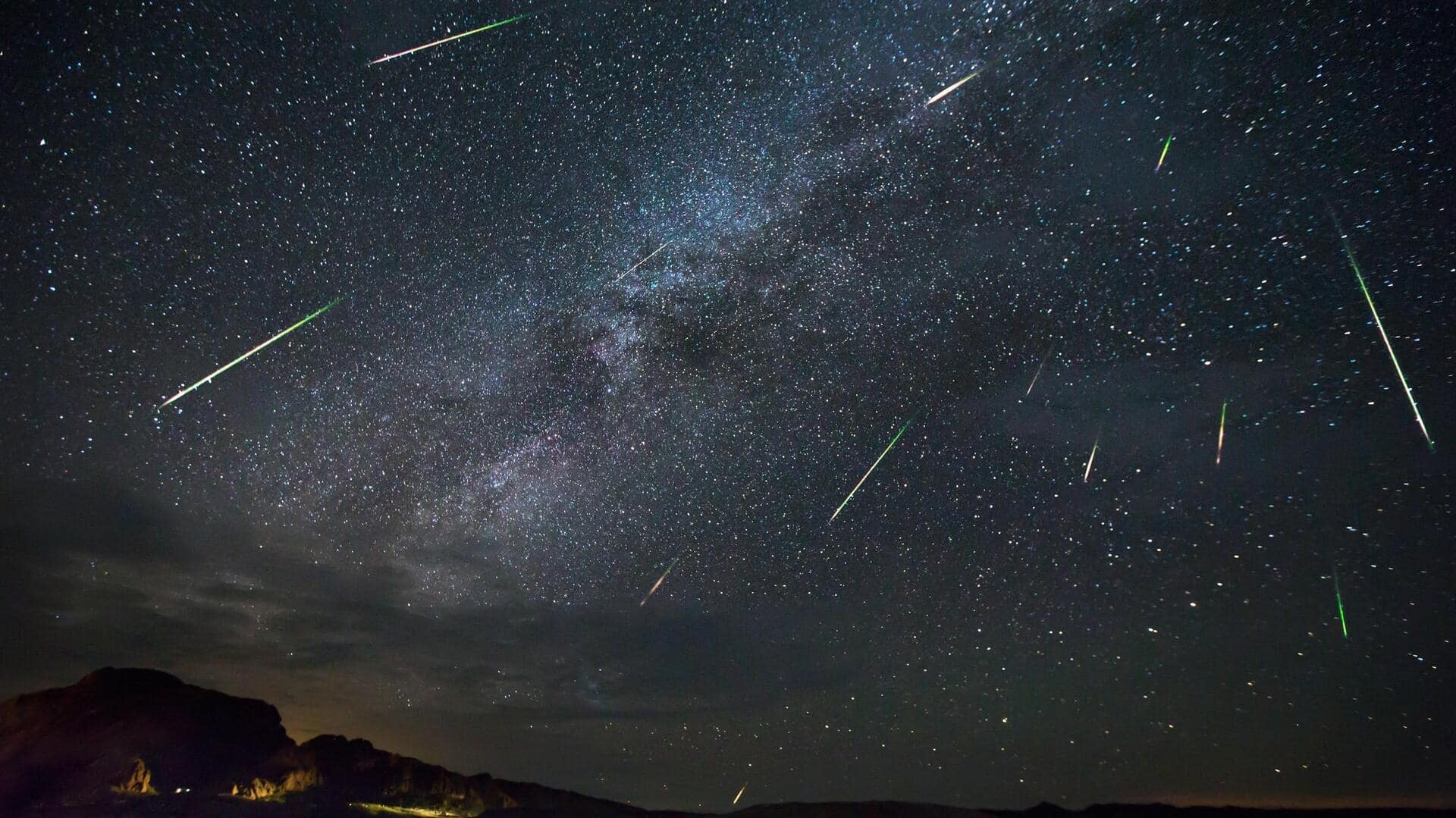
Geminid meteor shower peaks tonight: How to watch
What's the story
Get ready for a dazzling display of celestial fireworks as the Geminid meteor shower lights up the night sky on December 14-15. Per NASA, the Geminids are among the "best and most reliable annual meteor showers," known for their vibrant colors. The meteors will be visible in India as well. Under ideal viewing conditions, you will be able to see up to 120 shooting stars per hour.
Insights
Origin of Geminid meteor shower
Usually, a meteor shower is caused by comets. However, the Geminids are a result of an asteroid called 3200 Phaethon. This 5km-wide rock is often referred to as a "rock comet." As Earth moves through the debris left behind by the space rock, the dust grains collide with our atmosphere, creating brilliant flashes of light or shooting stars. Geminids typically reach Earth at 35km/s, roughly half the speed of a Leonid meteor.
Speciality
Geminids are known for their bright colors
Meteors can appear anywhere in the night sky, but their paths always lead back to a single point called the meteor shower's "radiant." In this case, the Geminid meteor shower originates from the constellation Gemini, which is also where it gets its name from. Geminids are distinctive because of their white, yellow, green, red, and blue hues. They owe their color to metals like sodium and calcium, per the Royal Observatory.
Details
Ideal viewing conditions for Geminids in 2023
This year's Geminids meteor shower is perfectly timed for optimal viewing, as the peak coincides with the Geminids' highest point in the sky from Earth's eastern longitudes. With perfect conditions and the radiant directly overhead, lucky viewers might spot two or three meteors every minute. The further north you are, the better your view will be. For example, in Delhi, the ideal time to catch the radiant directly overhead will be during the morning hours of December 15, per Mint.
Tips
Viewing tips
To make the most of your viewing experience, pick a location far from light pollution. Allow your eyes 20 to 30 minutes to adjust to the darkness. There's also a chance to view "Earth-grazing" meteors, which are bright, long shooting stars that travel nearly parallel to our atmosphere. The Moon is not expected to interfere with your viewing experience as it'll be in its waxing crescent phase.